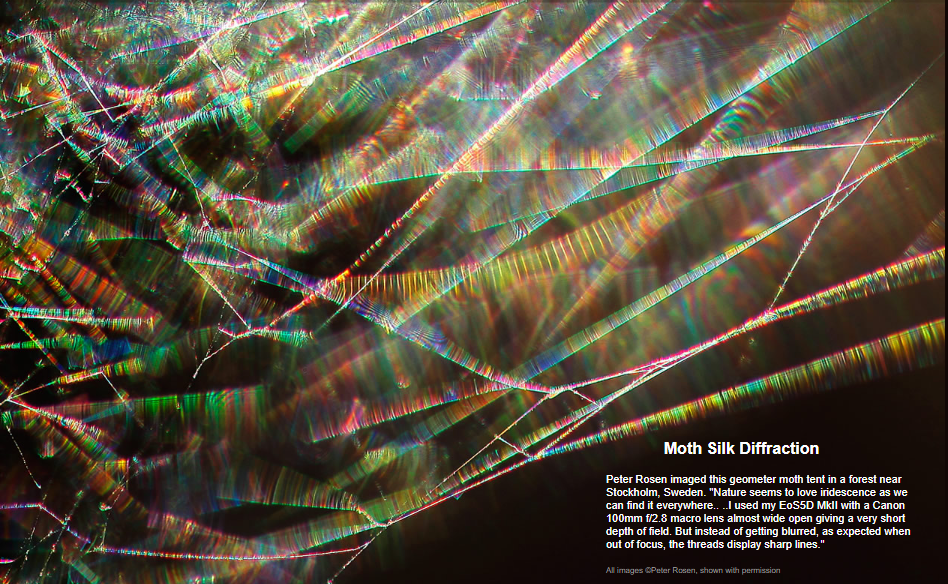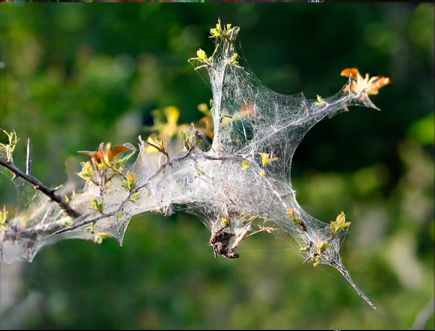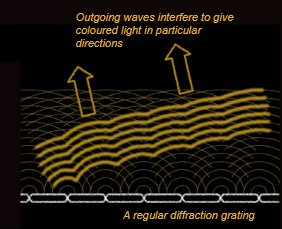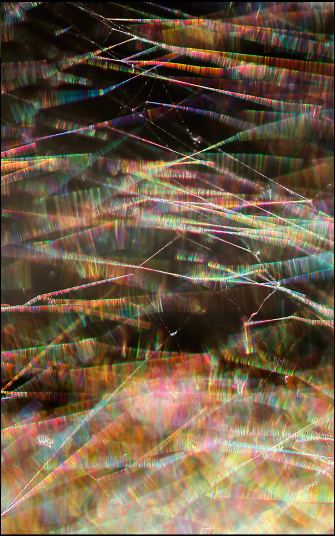Geometer Moth Silk Diffraction - OPOD
Geometer Moth Silk Diffraction - A Fascinating Natural Phenomenon
When it comes to the wonders of nature, iridescence is a captivating feature that can be found in various forms. One intriguing example of iridescence is the phenomenon of geometer moth silk diffraction. In this article, we will explore the mesmerizing patterns and colors that arise from the diffraction of light waves scattered by the silk threads of geometer moth tents.
Understanding Diffraction and its Colorful Patterns
Diffraction occurs when light waves scattered by different parts of an object combine and interfere with each other. This interference creates light and dark patterns, which can exhibit vibrant colors due to the wavelength-dependent nature of the phenomenon. Geometer moth silk diffraction is a perfect example of this captivating interplay of light waves.
A Wide Range of Diffraction Sources
While some forms of diffraction, such as coronae or glories, arise from individual particles or droplets, others result from periodic structures found in various objects. Examples include butterfly wings, DVDs, and even fly screens. Geometer moth silk falls into the latter category, as the periodic structure of the silk threads gives rise to diffraction colors and patterns.
Spider Silk vs. Moth Silk: Two Different Sources of Diffraction
Spider silk is renowned for its ability to produce diffraction color bands. The periodic structures present on spider webs generate these captivating colors. However, it is important to note that geometer moth silk differs from spider silk in terms of its diffraction characteristics.
While sticky spider capture threads display out-of-focus colors due to diffraction by glue globules containing bunched-up thread, non-sticky threads like those of geometer moths exhibit complex color bands. The exact origin of these color bands in geometer moth silk is not yet fully understood, adding an air of mystery to this natural phenomenon.
Unraveling the Complexity of Geometer Moth Silk
Geometer moth silk is a complex and diverse material, making it challenging to pinpoint the precise mechanisms behind its diffraction patterns. However, several factors may contribute to the creation of these captivating colors:
- Surface Irregularities: Non-sticky threads, including those of geometer moths, are known to possess rough surfaces. These irregularities could potentially cause diffraction by interacting with light waves, adding to the complexity of the color patterns observed.
- Internal Structure: Geometer moth silk may also contain an internal structure of pleated protein fibrils. When stressed, these fibrils partially unfold, increasing the elasticity of the thread. This quasi-periodic structure could further contribute to the diffraction colors observed in geometer moth silk.
The Beauty of Geometer Moth Silk Diffraction
The stunning images captured by Peter Rosen in a forest near Stockholm, Sweden, showcase the beauty of geometer moth silk diffraction. The sharp lines displayed by the silk threads, even when out of focus, highlight the intricate patterns and colors that emerge from this natural phenomenon.
Nature never ceases to amaze us with its ability to produce breathtaking displays of color and light. Geometer moth silk diffraction serves as a testament to the wonder and complexity of the natural world. As scientists continue to unravel the mysteries behind this captivating phenomenon, we can only marvel at the sheer beauty and elegance of these delicate silk threads.

Moth Silk Diffraction
Peter Rosen imaged this geometer moth tent in a forest near Stockholm, Sweden. "Nature seems to love iridescence as we can find it everywhere.. ..I used my EoS5D MkII with a Canon 100mm f/2.8 macro lens almost wide open giving a very short depth of field. But instead of getting blurred, as expected when out of focus, the threads display sharp lines."
All images ©Peter Rosen, shown with permission

Diffraction colours and patterns occur when light waves scattered by separate parts of an object combine and interfere. Directions where outgoing overlapping waves are in phase are strengthened while those where wave crests are out of phase are weakened. Light and dark patterns result and, as the effects are wavelength dependent, the patterns are coloured.
Some diffraction, that from coronae or glories is from individual particles or droplets (although one university meteorology department that should know better claims otherwise!). Other diffraction is from periodic structures, butterfly wings, DVDs and fly screens.

Spider & Moth Silk
Spider silk is best known for producing diffraction colour bands. Periodic structures on spider webs (but not moth tents) give diffraction colours although there is much that is speculative or not understood. Silks are complex and varied materials.
Sticky spider capture threads (right) have quasi regular glue globules containing bunched up thread. The thread unreels when an insect impacts the web, confers elasticity and prevents breakage. Some spider web out of focus colours are diffraction by these globules.
But non-sticky threads and presumably those of geometer moths can show the complex colour bands pictured here. Their origin is less easy to explain.
The non-sticky threads of spiders are known to have rough surfaces, presumably to allow the spider a firmer footing. Diffraction by these surface irregularities is possible. There can be an internal structure of pleated protein fibrils. They partially unfold when stressed and make the thread more elastic. They too could produce colours by diffraction from their quasi-periodic structure.


Note: this article has been automatically converted from the old site and may not appear as intended. You can find the original article here.
Reference Atmospheric Optics
If you use any of the definitions, information, or data presented on Atmospheric Optics, please copy the link or reference below to properly credit us as the reference source. Thank you!
-
<a href="https://atoptics.co.uk/blog/geometer-moth-silk-diffraction-opod/">Geometer Moth Silk Diffraction - OPOD</a>
-
"Geometer Moth Silk Diffraction - OPOD". Atmospheric Optics. Accessed on July 27, 2024. https://atoptics.co.uk/blog/geometer-moth-silk-diffraction-opod/.
-
"Geometer Moth Silk Diffraction - OPOD". Atmospheric Optics, https://atoptics.co.uk/blog/geometer-moth-silk-diffraction-opod/. Accessed 27 July, 2024
-
Geometer Moth Silk Diffraction - OPOD. Atmospheric Optics. Retrieved from https://atoptics.co.uk/blog/geometer-moth-silk-diffraction-opod/.